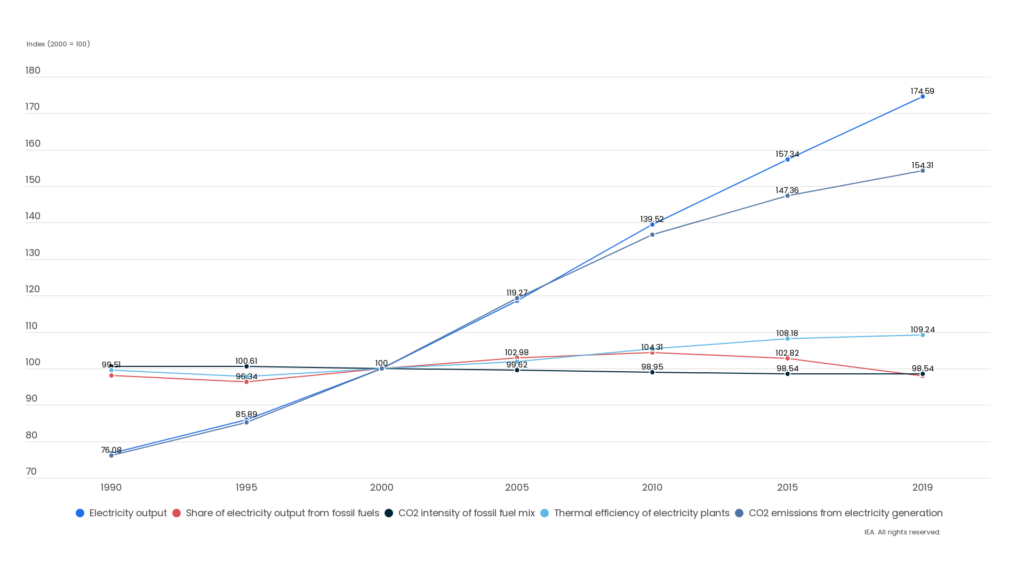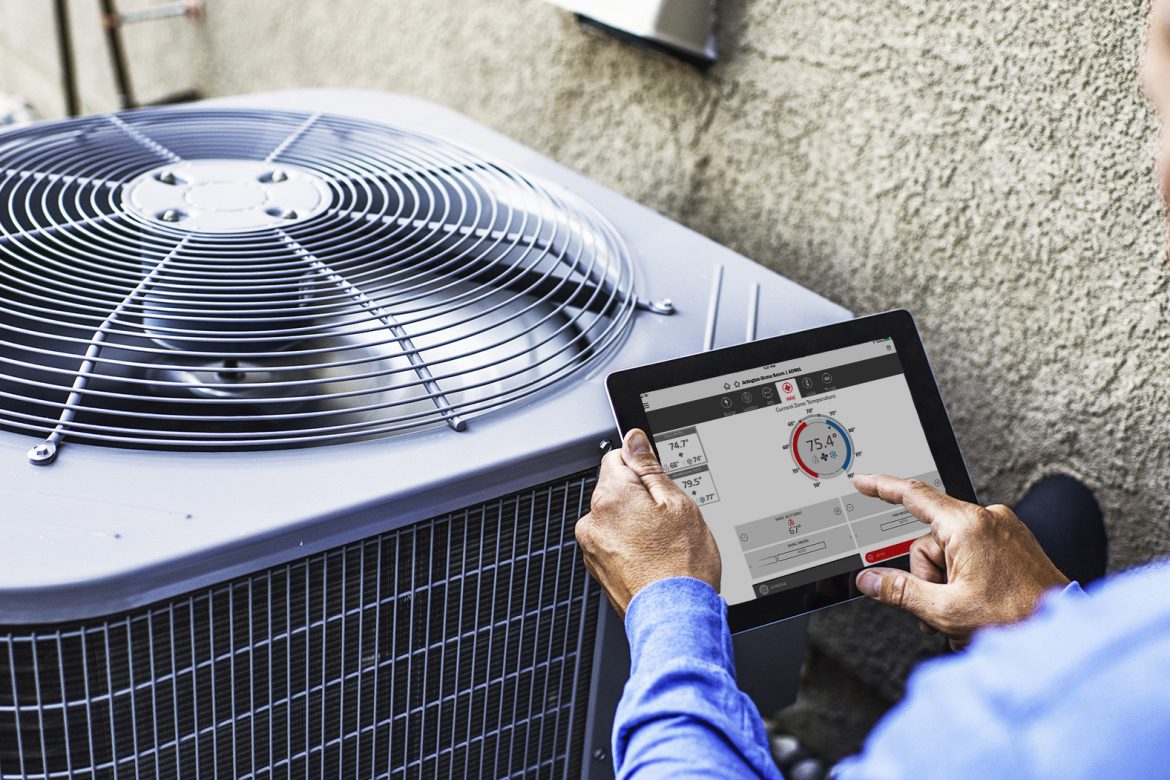Energy management systems can be complex and confusing, but they don’t have to be. This guide will give you the tools to know what an energy management system is and how it works, as well as how to find the right vendor for your needs.
Energy management systems (EMS) offer a complete solution for companies to optimize their energy usage with modern technology. In this guide, we cover everything you need to know about EMS, including:
- Opportunities that energy management can bring to commercial buildings
- The technologies and infrastructures behind EMS
- The structure of modern energy management systems
- A checklist for choosing the right EMS providers
Market Overview: The Energy Management Imperative
Energy management is one of the best ways for companies to future-proof their operations. External market forces – from rising energy costs to an aging grid to an evolving energy landscape – are accelerating the need for organizations to adapt and update their approach to energy management.
An alarming chart from IEA.org shows the increase in CO2 emissions due to electricity generation around the world.
CO2 emissions from electricity generation factors, World 1990-2019

Source: IEA Energy and Carbon Tracker 2020 | Documentation
Notes: CO2 emissions from electricity generation and thermal efficiency include CHP electricity plants.
What’s more, consumers continue to demand operational transparency and sustainability. The commercial real estate landscape has changed drastically from the pandemic, forcing the conversation on commercial efficiency. Ultimately, energy management not only streamlines and improves operations but also offers companies a foundational competitive advantage.
The Key Benefits of An Energy Management System
The benefits of energy management systems are many: they can add to top-line revenue, reduce energy costs, help companies meet sustainability goals, increase operational efficiency, and make businesses more resilient.
- Improved bottom-line savings: Energy is a significant expense for most organizations. Energy management systems help companies understand where energy is being used, and how to reduce consumption levels without sacrificing output. The result is lower utility bills and a competitive advantage over peers in terms of operating costs.
- Potential top-line revenue: Energy management systems can potentially generate top-line revenue through utility programs and partnerships. They can also streamline operations so resources are freed up and reallocated toward revenue-generating areas of the business.
- Actions for climate and sustainability goals: In recent years, organizations have faced increasing pressure to set and meet carbon emission targets, and reduce their environmental impact. Energy management systems show a commitment to ESG goals and deliver measurable results toward sustainability targets.
- Better operational efficiency: The pandemic shined a new light on the importance of operational efficiency. Through energy management software systems and other technologies, businesses can optimize operations by saving time, money, and resources.
- Energy resiliency: Businesses need to be prepared for factors from severe weather to economic shifts. EMS helps companies stay energy resilient, nimble, and better prepared for unexpected events.
Types of Energy Management Technology
Energy management systems are an essential part of any building’s infrastructure. There’s a wide range of options – and the best choice depends on the needs of each business or building. The first step in choosing an energy management system is understanding the different types of energy management systems out there. You’ll want to consider whether you want an end-to-end solution or just a piece of hardware or software that can work with another vendor’s product. Then you’ll want to understand how much control over your data each vendor offers and what kind of pricing model they use—and whether their grid technology meets your needs.
- Energy Management Systems. An energy management system, a group of hardware components that work together to monitor and control a building’s energy use, typically includes sensors that monitor real-time data from key areas within a building such as lighting, ventilation and heating/cooling equipment, then process the data by software algorithms to generate alerts when any issues occur or control energy usage.
- Controller – The controller is the brain of the system and runs all programs and processes.
- Automation Devices – These are devices that directly affect energy consumption within a building such as thermostats, lights, or HVAC systems. The automation device sends signals back to the controller which forwards them to other devices or software applications to act.
- Sensors — Sensors monitor environmental conditions in the building such as temperature, humidity, and CO2 levels. They also monitor equipment performance such as air conditioning compressor cycles, lighting levels, and elevator travel distances. Sensor data is sent to the controller where it’s processed and formatted on a GUI for the end-user.
- Power Monitoring and Submetering. Submetering allows customers to track the energy usage of specific areas of their premises. The technology comes in many forms, including smart meters and specialized meters that can be installed for individual applications. Submetering is a tool that businesses can use to reduce costs and increase profits by monitoring the energy use of individual equipment.
- Load Management and Control. Energy load management is the practice of adjusting energy consumption to match fluctuations in supply and demand. It is used primarily to reduce costs but can also be used to reduce emissions or avoid outages.
- How does energy load management work? The main principles behind energy load management are simple: electronic devices draw power from wall sockets, which can be controlled by plugging them into switches or by turning them on and off remotely. The amount of power consumed at any given moment is determined by the number of devices drawing power, their power usage, and how much time they spend on or off. Energy load management can be carried out manually or automatically. In manual energy load management, users manually adjust the state of their devices when they see an opportunity for savings — for example, unplugging a laptop charger when it’s not in use. In automatic energy load management, users don’t have to worry about making these adjustments themselves; instead, they rely on software programs to do this work for them whenever possible.
- Demand Response. Demand response (DR) is a system that automatically reduces or turns off select electricity-using appliances when demand for power spikes, reducing strain on the electric grid and avoiding brownouts or blackouts. DR can also be used in combination with load curtailment, which allows customers to voluntarily reduce their use of electricity during periods of peak demand.
Types of Energy Management System Platforms
You’ll also want to look at the vendor’s grid technology when considering an energy management system. This is the system’s backbone and how it collects and stores data. There are three main types of grid technology:
- Proprietary: This technology is owned by the vendor and unavailable to other companies. Proprietary systems often have a higher price tag but offer more features and functionality.
TIP: Look for a vendor with a proprietary system offering a subscription model service, like GridPoint, avoiding the high price tag. Check out our packages to see what works best for you! - Open source: This technology is available for anyone to use and modify. Open-source systems are often less expensive and can be more customizable but may require more maintenance.
- Hybrid: This is a combination of proprietary and open-source technology. Hybrid systems offer the best of both worlds, but they can be more expensive.
Choosing the Right Energy Management Vendor
When it comes to choosing an energy management vendor, there are a few key factors to consider. First, you’ll want to consider the size of the buildings or industries the vendor can serve. TIP: Very few energy management vendors work with small-to-medium size businesses and building types and don’t have the right tools and systems to optimize their energy efficiency. At GridPoint, that is our specialty! Next, you’ll want to look at the type of hardware that the vendor offers. Is it comprehensive and integrated? Finally, you’ll want to consider the company’s capabilities in terms of new builds, retrofits, and energy optimization services.
The right energy management vendor will be able to save your business money on utility bills and help you take advantage of demand response and other grid-interactive technologies. They should also offer flexible pricing and financing options so no capital expenditure is required.
No matter which vendor you choose, don’t forget to ask about these core capabilities:
- The ability to track and monitor energy usage in real-time
- The ability to set goals and create alerts
- The ability to create customized reports
- Integrations with other business systems
- A user-friendly interface
Once you’ve considered all these factors, you can choose the right energy management system for your business.


